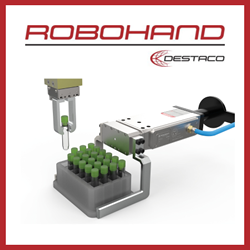With its extensible architecture and APIs, the Humatics Spatial Intelligence Platform™ will power an ecosystem of new position-based products and services.
The Humatics Spatial Intelligence Platform
David Mindell | Humatics
What does Humatics do?
Humatics is revolutionizing how people and machines locate, navigate and collaborate with its high-precision microlocation system and analytics software. We envision a world full of highly precise, local, navigational interactions that opens a host of new applications and data related to people, places, and things.
What is the Humatics Spatial Intelligence Platform™?
The Humatics Spatial Intelligence Platform™ is comprised of our microlocation system combined with our proprietary analytics software. With its extensible architecture and APIs, the Humatics Spatial Intelligence Platform™ will power an ecosystem of new position-based products and services.
What is the benefit of microlocation and how does Humatics upgrade on existing technology?
Today’s GPS and radio-based local area positioning technologies have limited precision, with uncertainties ranging from many centimeters to several meters. Camera-based systems are expensive and sensitive to lighting conditions. Microlocation creates an entirely new product category that captures millimeter-scale position and motion data at low cost, indoors and out.
Just as GPS opened a new world of data at the scale of our cities and towns, microlocation is about to open new worlds of position based services and analytics at the scale of our robots and our bodies.
Imagine tracing the movements of a conductor to capture the subtlety of her motions as she conducts Beethoven. We’ve done that. Imagine tracing the work of an assembly line worker to see the knowledge embedded in the flow of skilled hands. We’ve done that too. Imagine a robot collaborating with a person using exquisitely precise knowledge of what the person is doing. Imagine a drone that hovers and lands with unprecedented 3D precision, and augmented reality glasses that project ultra-precise images onto the world you see. Now imagine microlocation combined with AI and machine learning and applied to every automobile, every factory worker, every robotic collaboration. That’s where Humatics is going.
What are some example applications that you see in the manufacturing sector?
We are piloting the Humatics Spatial Intelligence Platform™ with the industrial automation and manufacturing markets where millimeter-scale precision can dramatically improve safety, efficiency and productivity. In these markets, we have a clear view into a diverse range of applications including robotics, material handling, logistics, safety, additive manufacturing, and across the broad category of Industrial Internet of Things (IIoT). Given the multitude of these applications within a typical manufacturing environment, the Humatics Spatial Intelligence Platform™ will be capable of providing global coverage throughout an entire facility. ‘Microlocation-as-a-service’ in this context has far-reaching implications, including for Factory of the Future and Industry 4.0 initiatives.
Here are just a few examples where we see significant market opportunity:
- Robotics (e.g. shared human robot assembly)
- Autonomous ground vehicles (e.g. localization and navigation)
- Industrial IoT (vibration and position tracking for predictive maintenance and analytics)
- Augmented reality (AR) (e.g. for warehouse pick and place)
- 3D printing (e.g. increased head speed and accuracy on large format systems)
- Material handling (e.g. continuous calibration for large format pick and place systems)
- Safety (e.g. intelligent, dynamic zoning)
- Process analysis and optimization (e.g. worker motion analysis and optimization)
- Logistics (e.g. asset tracking and analysis)
- Many more…
At what stage of development are you currently?
Though we are not discussing product roadmap specifics at this time, we can share that we expect to officially begin selling our microlocation system and licensing the Humatics Spatial Intelligence Platform™ in 2018.
Do you have a timetable for implementation of this technology in real world applications?
We are now piloting the Humatics Spatial Intelligence Platform™ with key industrial automation and manufacturing partners where millimeter-scale precision can dramatically improve safety, efficiency and productivity, and create tremendous value.
We expect to officially begin selling our microlocation system and licensing the Humatics Spatial Intelligence Platform™ in 2018.
What’s next for Humatics?
We are focusing initially on the industrial manufacturing sector. It’s an industry where humans and machines already interact frequently, so the ability to work in a safer, more efficient manner is critical. Moving forward, our technology will impact applications in any and every industry because it addresses a fundamental challenge in the connected world – how to locate an object within mere millimeters of where it needs to be or in proximity to a person. Here are a few examples of future applications we are actively exploring:
- Automotive (e.g. autonomous navigation systems)
- Military (e.g. air-to-air refueling and training)
- Commercial drones (e.g. ‘last meter’ docking precision)
- Sports (e.g. pitch and swing analysis)
- Consumer products (e.g. activity tracking)
- Retail (e.g. in-store analytics and location-based services)
- Virtual Reality / Augmented Reality (e.g. VR gaming)
 About David Mindell
About David Mindell
David is a professor of aeronautics and astronautics and Dibner professor of the history of engineering and manufacturing at MIT. As part of his research on the myriad relationships between people and autonomous robots, he has participated in more than 25 oceanographic expeditions and developed and licensed spread-spectrum sonar technologies for undersea navigation. He is the author of five books, including Our Robots, Ourselves: Robotics and the Myths of Autonomy (2015) and Digital Apollo: Human and Machine in Spaceflight (2008). David has a BS in electrical engineering from Yale; a BA in literature from Yale; and a PhD in the history of technology from MIT.
The content & opinions in this article are the author’s and do not necessarily represent the views of RoboticsTomorrow
Featured Product

